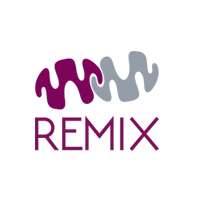The aim of this secondment was to learn how to use and maintain the Oxygraph-2k, how to work with O2k modules and to get familiar with SUIT (substrate-uncoupler-inhibitor-titration) protocols.
The Oroboros Oxygraph-2k measures oxygen consumption with high resolution in isolated mitochondria, intact and permeabilized cells and also tissues. The measuring occurs in a closed glass chamber with a polarographic oxygen sensor placed inside. Recorded data are viewed and analyzed in DatLab, a software designed for O2k. Apart from oxygen consumption, the machine can also assess reactive oxygen species (ROS) production via fluorometric approach.
My secondment started with MitoFit Coaching Days, which is a 3-days hands-on course on the basics of respirometry with the O2k and subsequent analysis of the obtained data. This introduction gave me the fundamentals to start working on the machine the following days. At the time of the secondment, I did not have samples of LONP1-depleted tissues or cells, as I was still in the process of developing the model. That fact allowed me to join Dr. Carolina Doerrier, my scientific supervisor within the company, in the ongoing projects of the company and to observe scientific research and development in a business context, while learning what I needed.
I was assigned testing some of the newly designed SUIT protocols for different pathways with wild type cells for the new DatLab release – I was treating HEK293 cells with various substrates and inhibitors of oxidative phosphorylation enzymes and observing the effect of the chemicals on the cell oxygen consumption. I was also included in the regular maintenance of the machines, from which I learned how to properly clean and calibrate the oxygraphs and how to troubleshoot possible technical issues.
I was invited to attend weekly scientific seminar, where PhD students or post-doctoral fellows were presenting new findings, which is common to any research group, but what was very interesting and new to me, were the company meetings, where the new possible developments either of the hardware or the methods were discussed (e.g. targeting new pathways or changing the current SUIT protocols) or the scientific team presented problems reported by oxygraph users, trying to think about possible solutions for the clients. That was a completely new point of view and way of thinking for me, as I was always on the final end of the chain as a customer/user.
I would love to thank REMIX for making this kind of very important experiences possible. I would love to thank also Prof. Erich Gnaiger and other members of the Oroboros company for the opportunity to be part of their team and allowing me to see how a scientific company functions and showing me that there are more ways of how science is applicable. I appreciated the manner how the company was managed – even though a business, the main focus was still on how to improve mitochondrial research and how to make it easier for other scientists to obtain complex amount of data that can possibly lead to human disease diagnostics and treatments. Also, I need to mention that it was very nice working in a such friendly atmosphere, where people were willing to teach and help. And the beautiful city of Innsbruck with the surrounding Alps mountains made my stay even more enjoyable.
